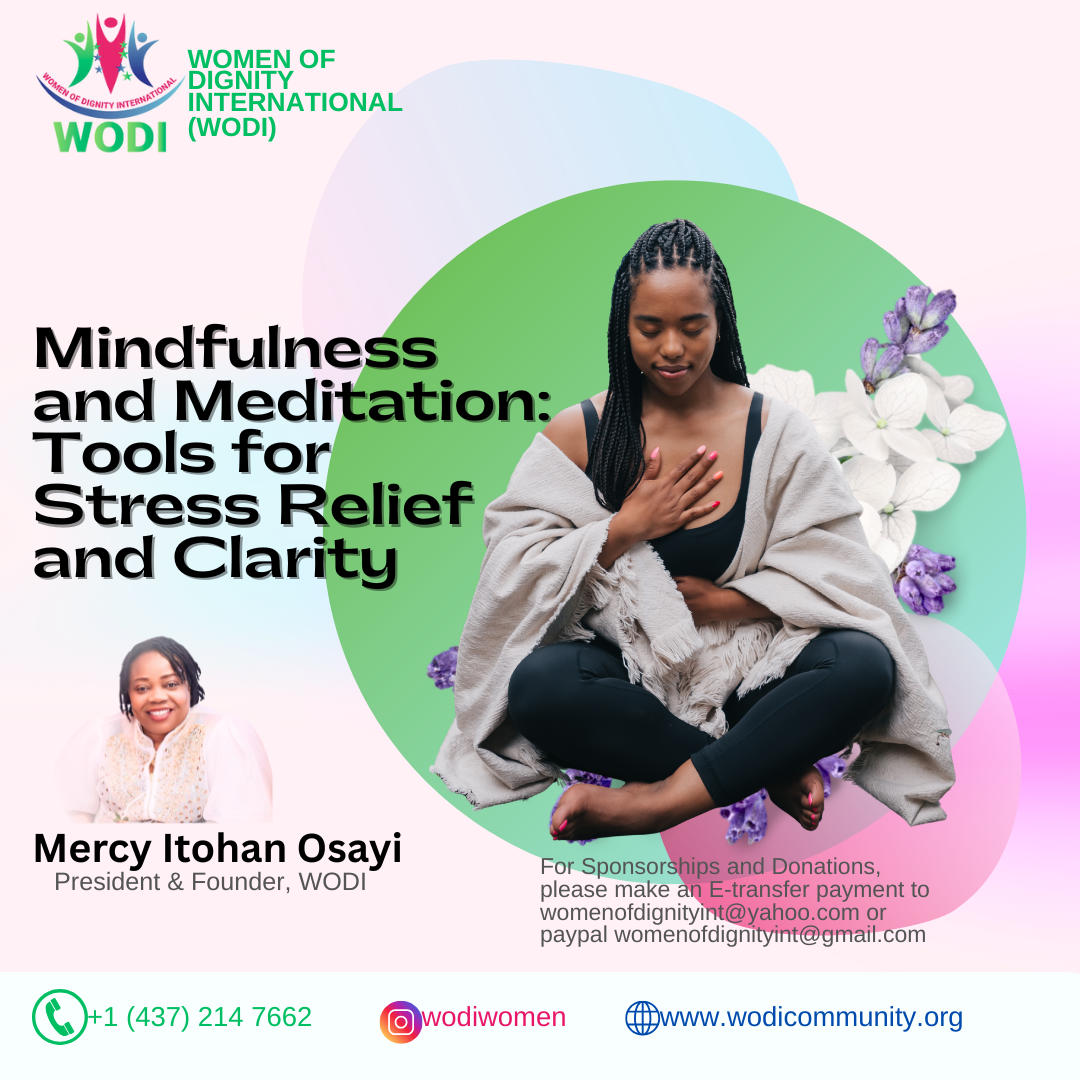Mindfulness and Meditation: Tools for Stress Relief and Clarity

Mindfulness and Meditation: Tools for Stress Relief and Clarity
Mindfulness and meditation are powerful practices that can significantly enhance mental well-being, reduce stress, and promote clarity. Here’s an overview of these tools, their benefits, and how to incorporate them into daily life.
What is Mindfulness?
Mindfulness is the practice of being present and fully engaged in the current moment, without judgment. It involves paying attention to thoughts, feelings, bodily sensations, and the environment around you. Mindfulness encourages awareness of the present rather than dwelling on the past or worrying about the future.
Benefits of Mindfulness
1. Stress Reduction: Mindfulness helps lower stress levels by promoting relaxation and reducing the body's stress response.
2. Improved Focus: Regular practice enhances concentration and attention span, making it easier to engage in tasks.
3. Emotional Regulation: Mindfulness fosters a better understanding of emotions, helping individuals respond to situations more calmly.
4. Enhanced Well-being: Practicing mindfulness can lead to increased feelings of happiness and contentment.
5. Better Relationships: Being present can improve communication and empathy in relationships.
What is Meditation?
Meditation is a technique that involves focusing the mind to achieve a state of calmness, clarity, and emotional stability. There are various forms of meditation, including mindfulness meditation, loving-kindness meditation, transcendental meditation, and guided visualization.
Benefits of Meditation
1. Stress Relief: Meditation activates the body’s relaxation response, reducing stress hormones and promoting a sense of peace.
2. Increased Clarity: Regular meditation practice can lead to improved cognitive functions and clearer thinking.
3. Enhanced Self-Awareness: Meditation encourages introspection and self-discovery, helping individuals understand their thoughts and behaviors.
4. Better Sleep: Many people find that meditation helps them relax before bedtime, leading to improved sleep quality.
5. Health Benefits: Studies suggest that meditation can lower blood pressure, reduce chronic pain, and improve overall health.
How to Practice Mindfulness and Meditation
1. Start Small: Begin with just a few minutes each day. Gradually increase the duration as you become more comfortable.
2. Find a Quiet Space: Choose a peaceful environment where you won’t be disturbed.
3. Focus on Your Breath: A common starting point for both mindfulness and meditation is to focus on your breathing. Notice the sensation of air entering and leaving your body.
4. Observe Your Thoughts: When thoughts arise, acknowledge them without judgment and gently bring your focus back to your breath or present sensations.
5. Practice Mindful Activities: Incorporate mindfulness into daily activities such as eating, walking, or washing dishes. Pay attention to the sensations, smells, and sounds involved in these tasks.
6. Use Guided Meditations: Many apps and online resources offer guided meditations that can help you get started.
7. Be Consistent: Try to practice regularly, whether it’s daily or several times a week. Consistency helps reinforce the benefits.
Conclusion
Mindfulness and meditation are accessible tools that can help manage stress and enhance clarity in daily life. By incorporating these practices into your routine, you can cultivate a greater sense of peace, improve emotional health, and develop a deeper understanding of yourself and your surroundings. Start with small steps, be patient with yourself, and enjoy the journey towards greater mindfulness and well-being.
